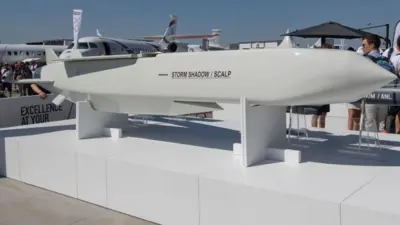We've updated our Privacy and Cookies Policy
We've made some important changes to our Privacy and Cookies Policy and we want you to know what this means for you and your data.
China's unmanned Shenzhou 8 capsule returns to Earth
- Author, Jonathan Amos
- Role, Science correspondent, ґуПуґ«ГЅ News
A Chinese spacecraft has returned to Earth after completing the nation's first docking manoeuvres in orbit.
The Shenzhou 8 capsule landed in the Gobi desert late on Thursday (Beijing time), the final moments of its descent having being slowed by parachute.
While in orbit, the unmanned Shenzhou mission had rendezvoused with China's mini spacelab, Tiangong-1.
The success of the venture paves the way for astronauts to visit the lab next year.
Officials have indicated their desire to launch one, or perhaps two, manned missions in 2012. They have also said that 2012 might even see the country's first female astronaut.
Ultimately, China hopes the technological progress it is making in orbit will lead to the development of a fully fledged space station at the end of the decade.
Shenzhou 8 spent just under 17 days in orbit in total, the longest Shenzhou mission to date.
Its goal had been to chase down and join with Tiangong-1, to demonstrate the technologies that will be essential if larger structures are to be assembled in space.
Although there were no astronauts - yuhangyuans - on the flight, Shenzhou 8 was carrying biological experiments featuring fish, plants, worms, bacteria and even human cancer cells.
These studies, designed jointly by Chinese and German scientists, were retrieved from the capsule after its return to the grasslands of Siziwang Banner in the north of China at about 19:30 CST (11:30 GMT).
Beijing sees the Tiangong and Shenzhou dockings as the next phase in its step-by-step approach to acquiring the skills of human spaceflight operations.
It is a learning curve China hopes will culminate in the construction of a space station. This could start taking shape before 2020.
At about 60 tonnes in mass, this future station would be considerably smaller than the 400-tonne international platform operated by the US, Russia, Europe, Canada and Japan, but its mere presence in the sky would nonetheless represent a remarkable achievement.
Concept drawings describe a core module weighing some 20-22 tonnes, flanked by two slightly smaller laboratory vessels.
Officials say it would be supplied by freighters in exactly the same way that robotic cargo ships keep the International Space Station (ISS) today stocked with fuel, food, water, air, and spare parts.
- Tiangong-1 was launched in September on a Long March 2F rocket
- The unmanned laboratory unit was first put in a 350km-high orbit
- Shenzhou 8 was sent up to rendezvous and dock with Tiangong-1
- The project tested key technologies such as life-support systems
- China aims to start building a 60-tonne space station by about 2020
<link> <caption>Jonathan.Amos-INTERNET@bbc.co.uk</caption> <url href="mailto:Jonathan.Amos-INTERNET@bbc.co.uk" platform="highweb"/> </link>
Top Stories
More to explore
Most read
Content is not available








